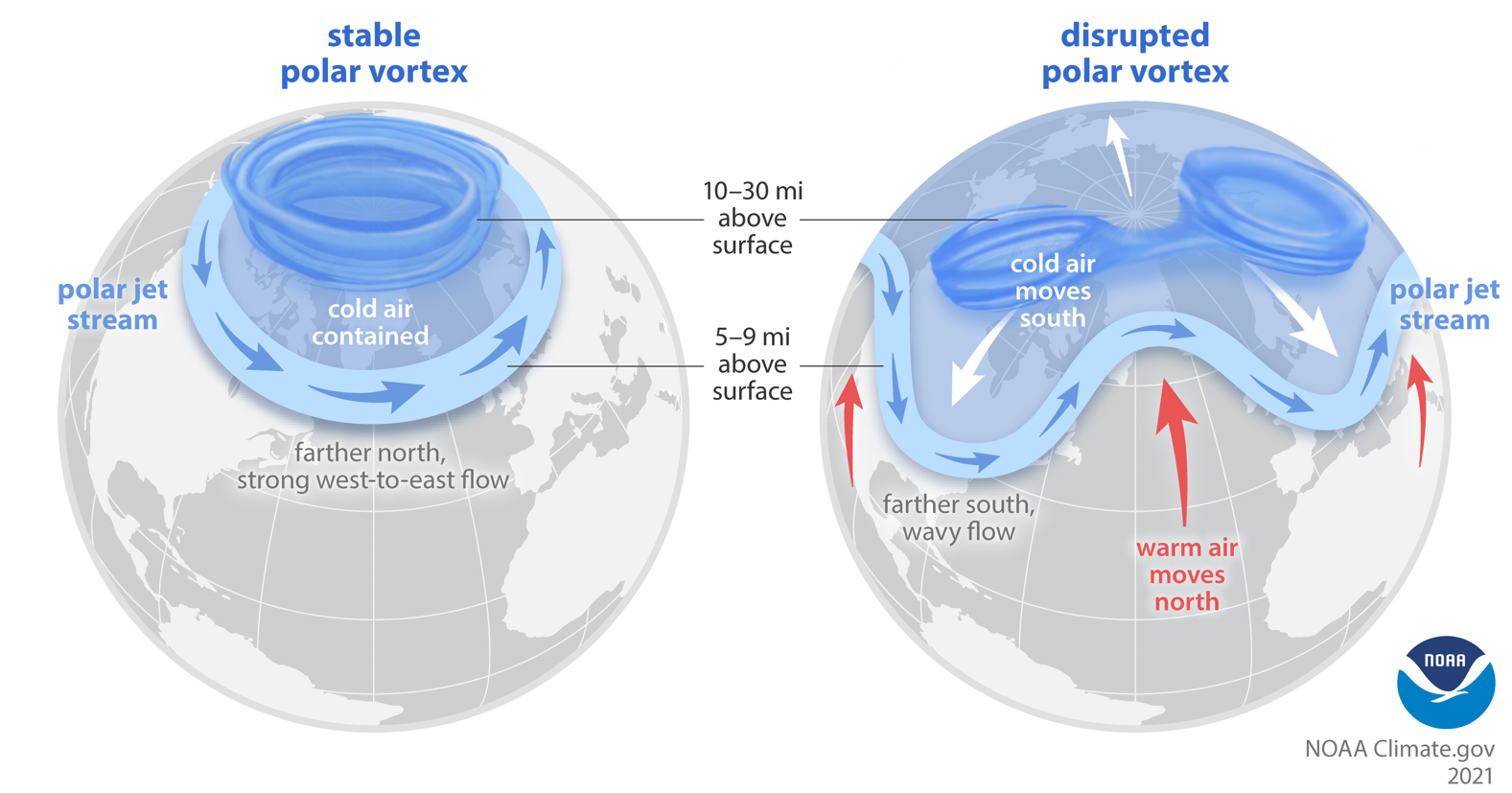It’s the “Bleak Midwinter” in the Northern Hemisphere – so, in case you’ve been living under a well-insulated rock, cold weather and snowfalls are hardly unexpected in many parts of the world. However, the especially low temperatures seen in parts of the US this month can be partially attributed to another phenomenon: the polar vortex.
The polar vortex is a low-pressure system of cold air that swirls above Earth’s poles. There’s one over the South Pole in Antarctica – but for this story, we’ll be focusing on the one above the North Pole. Over the North Pole, the wind flows counterclockwise in the stratosphere around 16 to 50 kilometers (10-30 miles) high.
It is closely related to the polar jet stream, a strong wind current that forms at the boundary of the polar vortex. Together, these forces help to trap cold air around the poles. However, the polar vortex can be disturbed or weakened due to numerous factors, allowing cold air to escape and move into lower latitudes.
Most notably in winter months, the circling vortex of cold air can break down, causing the polar jet stream to become “wavy“, stirring up extra-chilly weather at lower latitudes, including North America and Europe.
If you’re struggling to picture this in your head, check out the beautifully simple diagram by the National Oceanic and Atmospheric Administration (NOAA) below.

An illustration of how the polar vortex can impact weather in the Northern Hemisphere.
Image credit: NOAA
This effect, in part, is what’s driving cold temperatures in many parts of the US right now. In the first week of January 2025, freezing temperatures have hit large parts of the eastern US, while heavy snowfall has been forecasted for much of the Appalachians, Ohio Valley, Mid-Atlantic, Great Lakes, and Northeast.
Bear in mind that not all parts of the US are being impacted, though. Significant parts of the western part of the country are experiencing near normal temperatures for the season – or even above average temperatures.
Scientists are getting better and better at predicting when polar vortex disturbances and full-blown breakdowns will occur. According to NOAA, the forecasts are primarily based on two factors: first, “persistent weather patterns in the lower atmosphere […] that can amplify large-scale atmospheric waves vertically into the stratosphere”; and second, certain winds in the stratosphere guide these waves towards the polar vortex, causing the vortex’s winds to weaken rapidly.
Nevertheless, these things are still very hard to foretell, even with the latest technology and know-how. In December 2024, NOAA suggested that there was a 55 percent change the winter of 2024-2024 would have a strong polar vortex and no breakdown.
As we can see, things turned out a little differently.
All “explainer” articles are confirmed by fact checkers to be correct at time of publishing. Text, images, and links may be edited, removed, or added to at a later date to keep information current.
Source Link: Polar Vortex And Polar Jet Stream: What's Behind The Freezing Weather In The US?